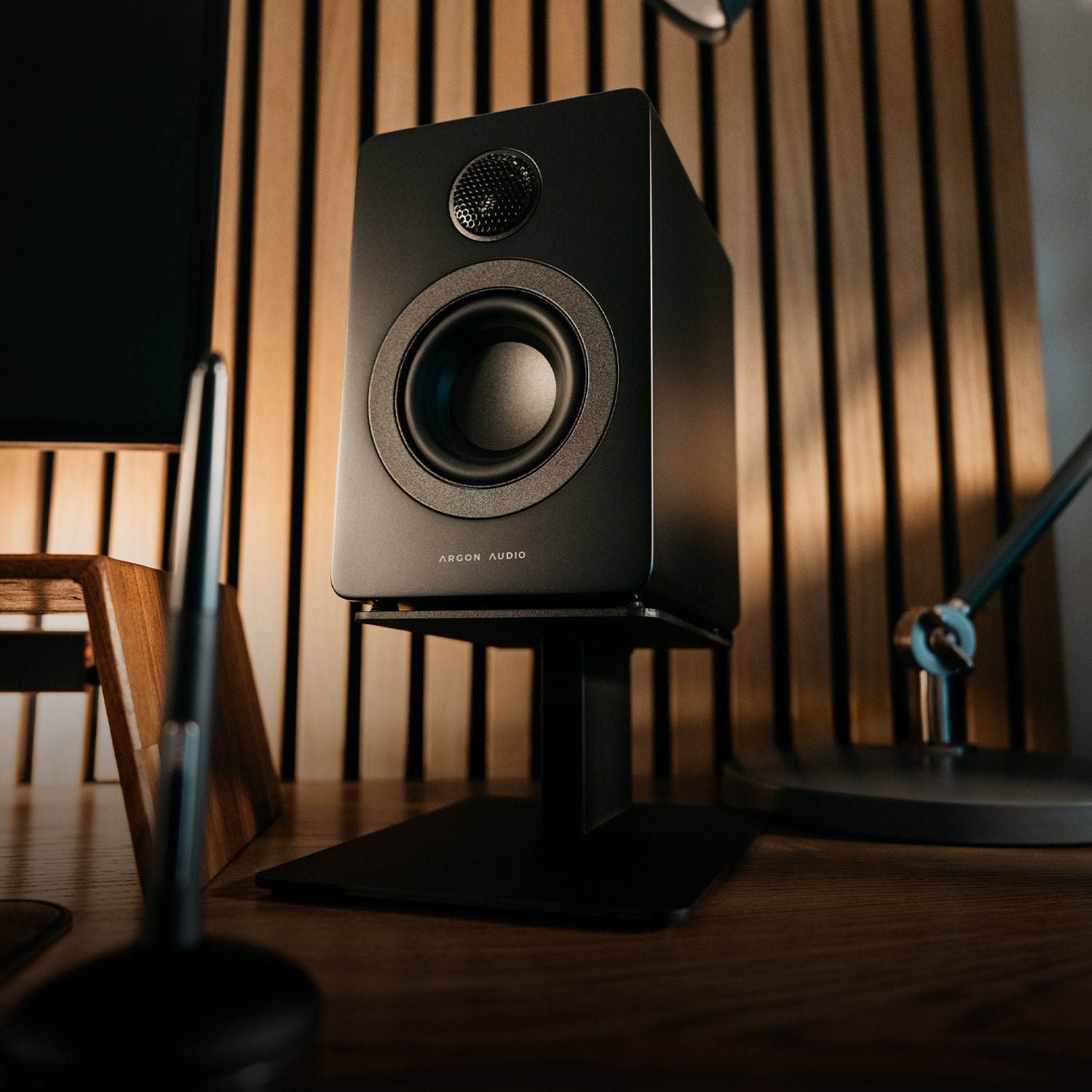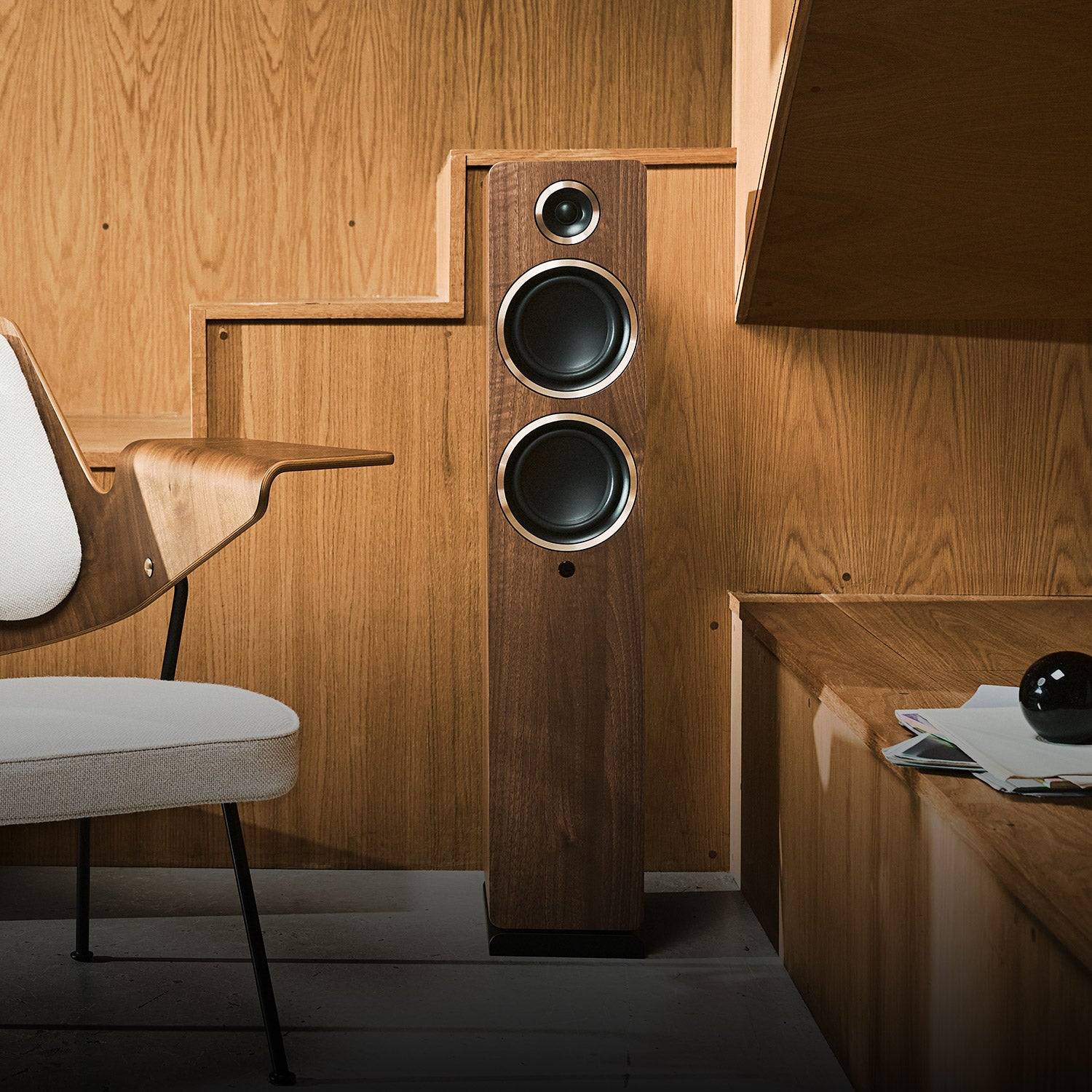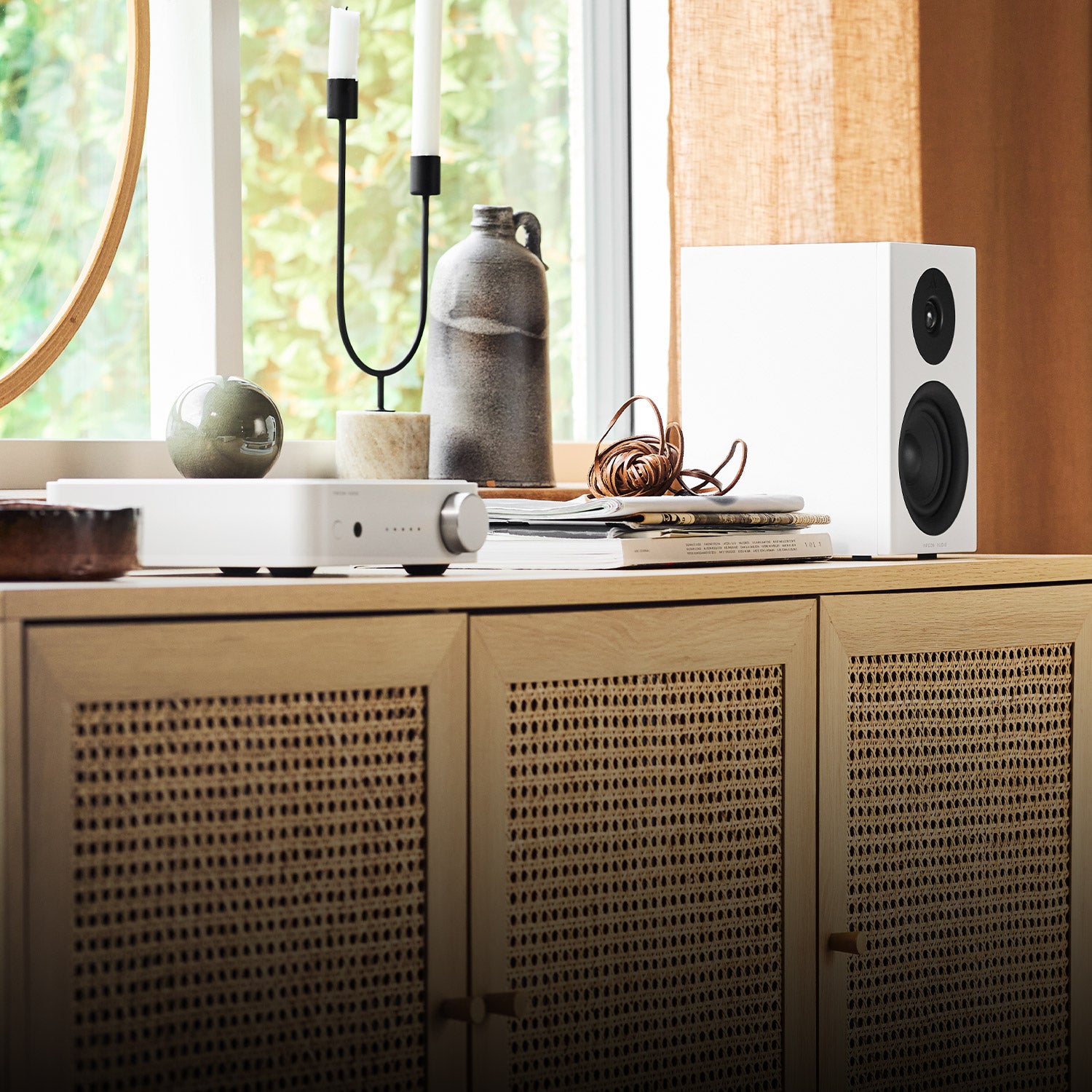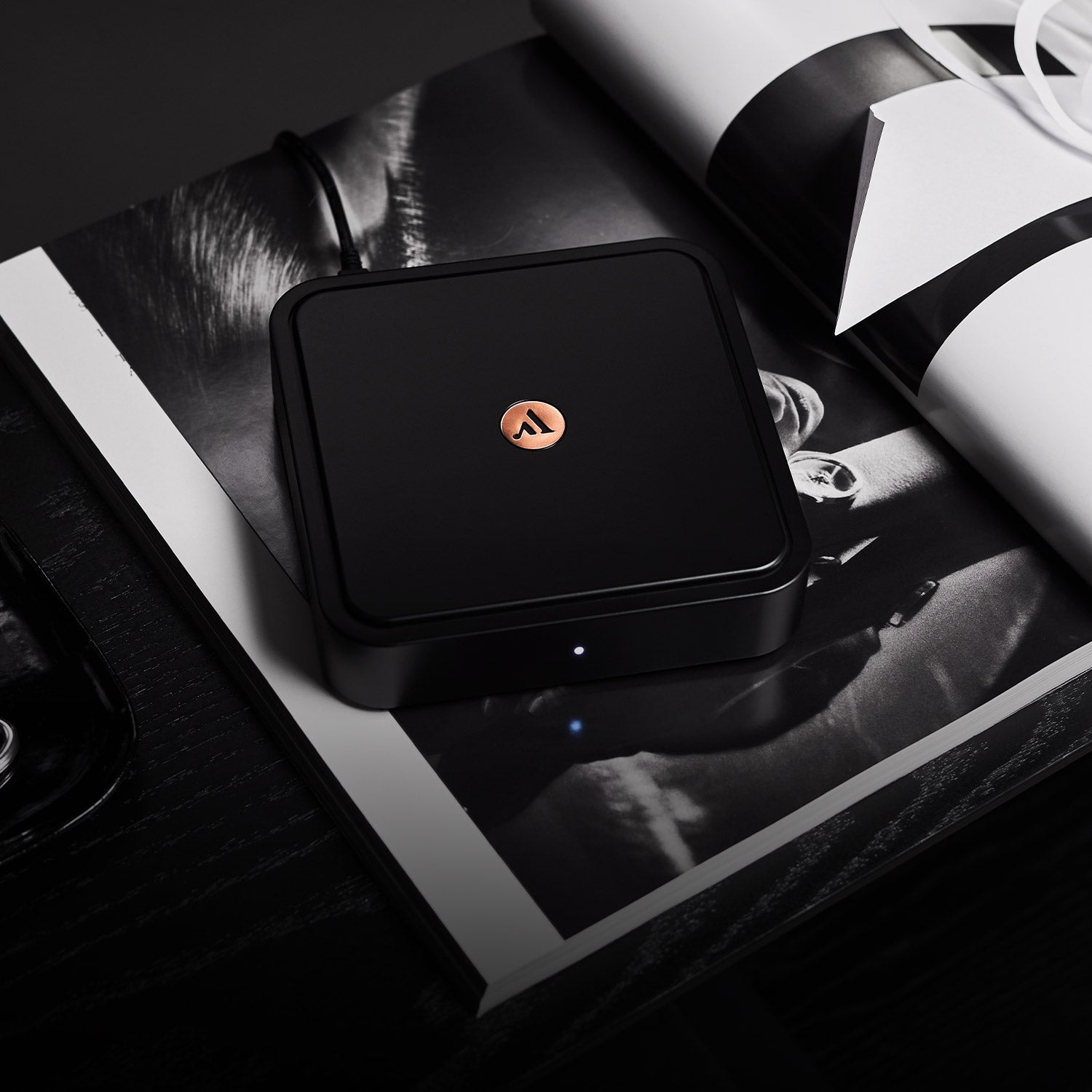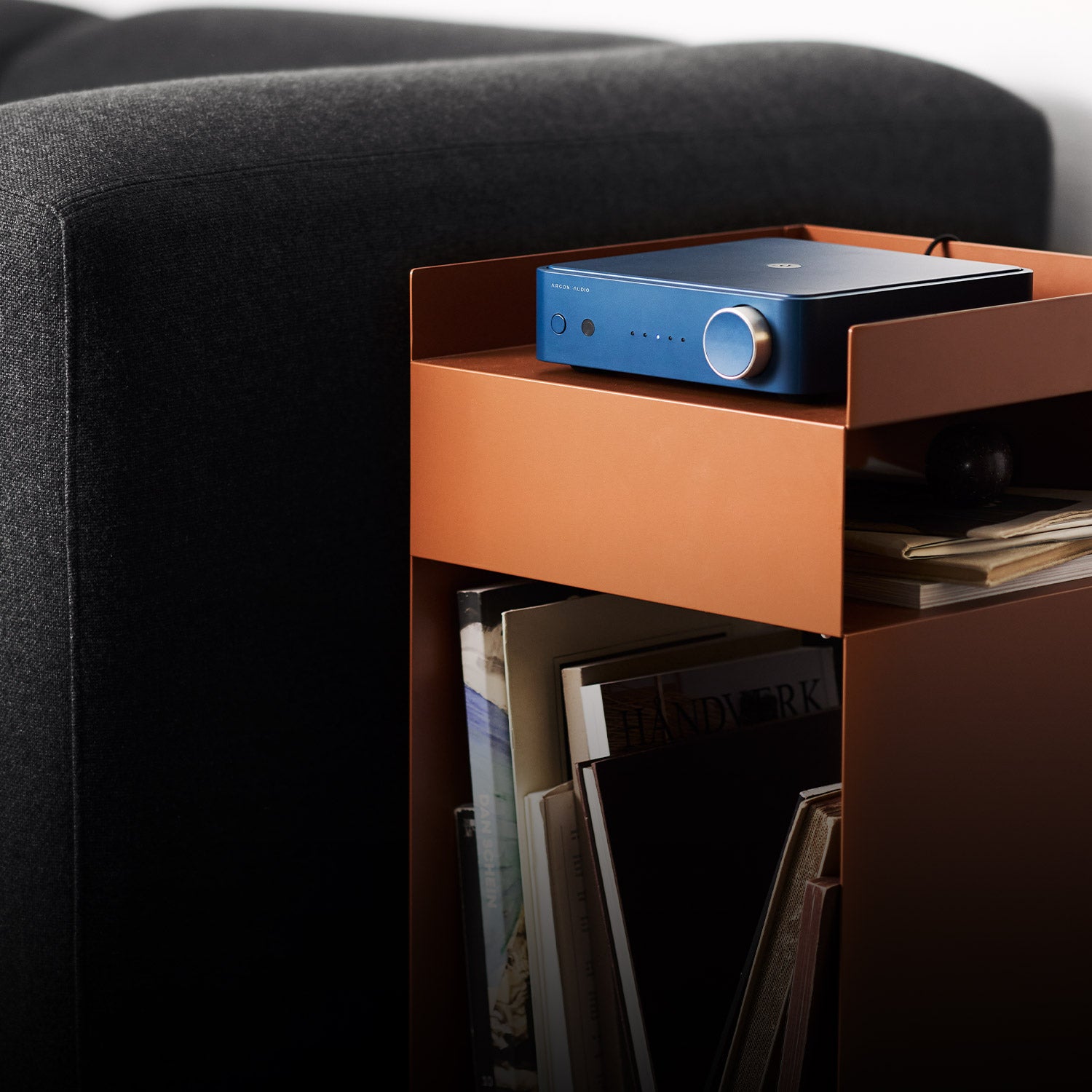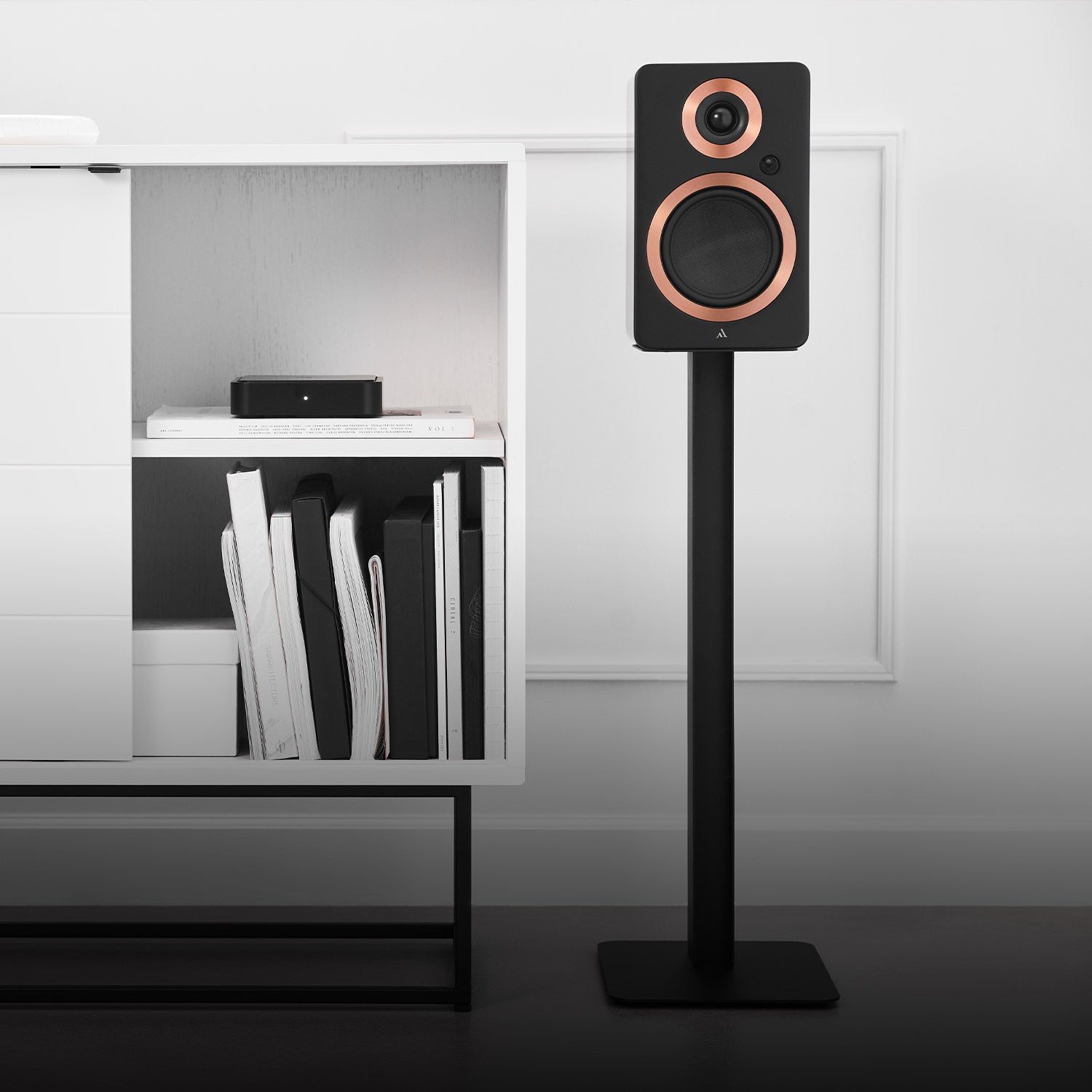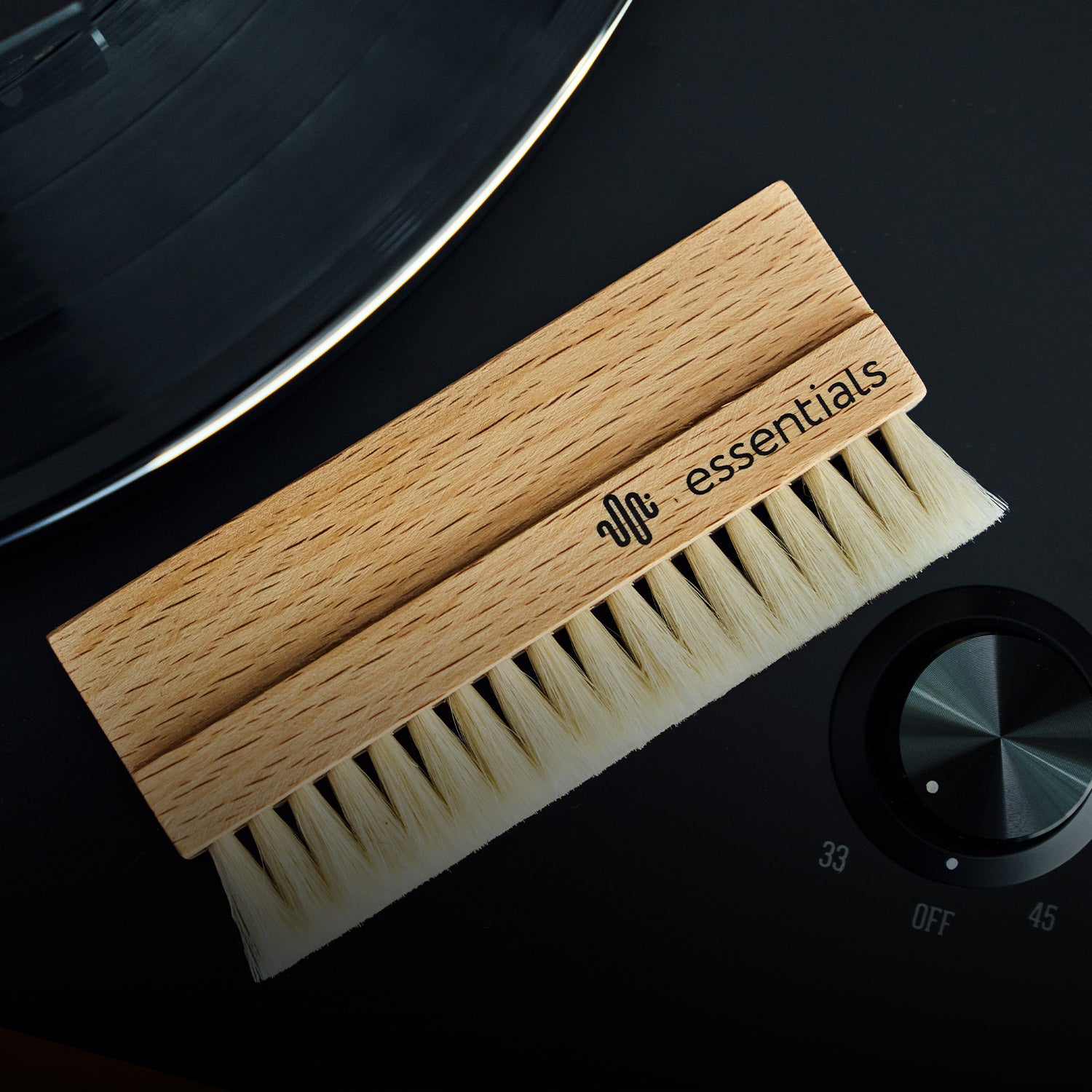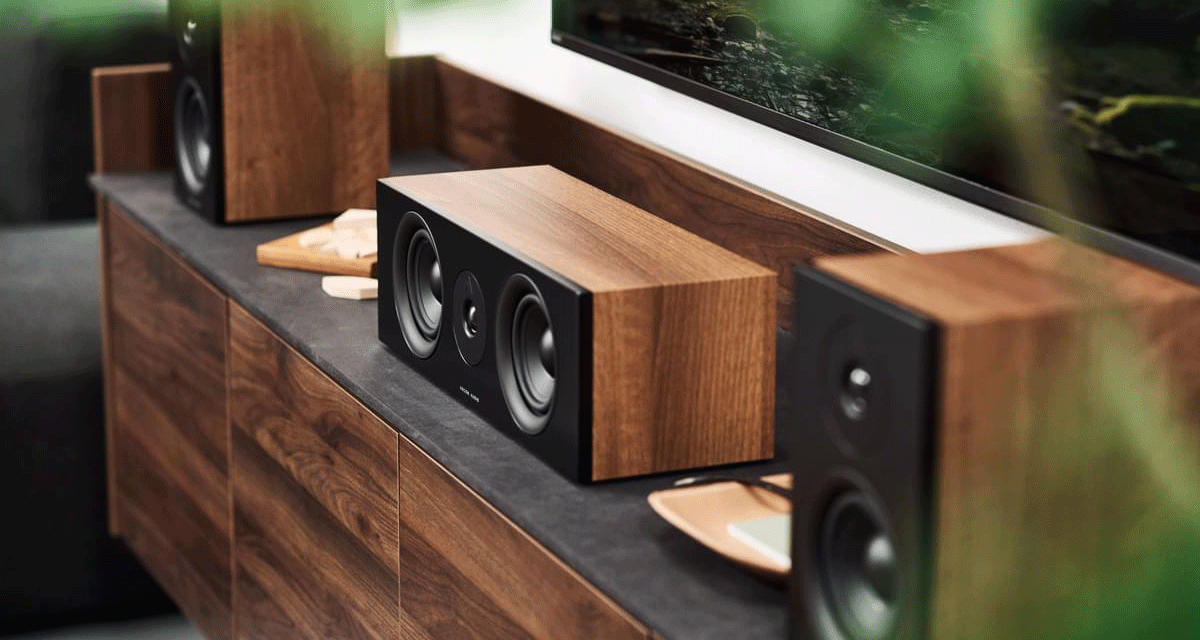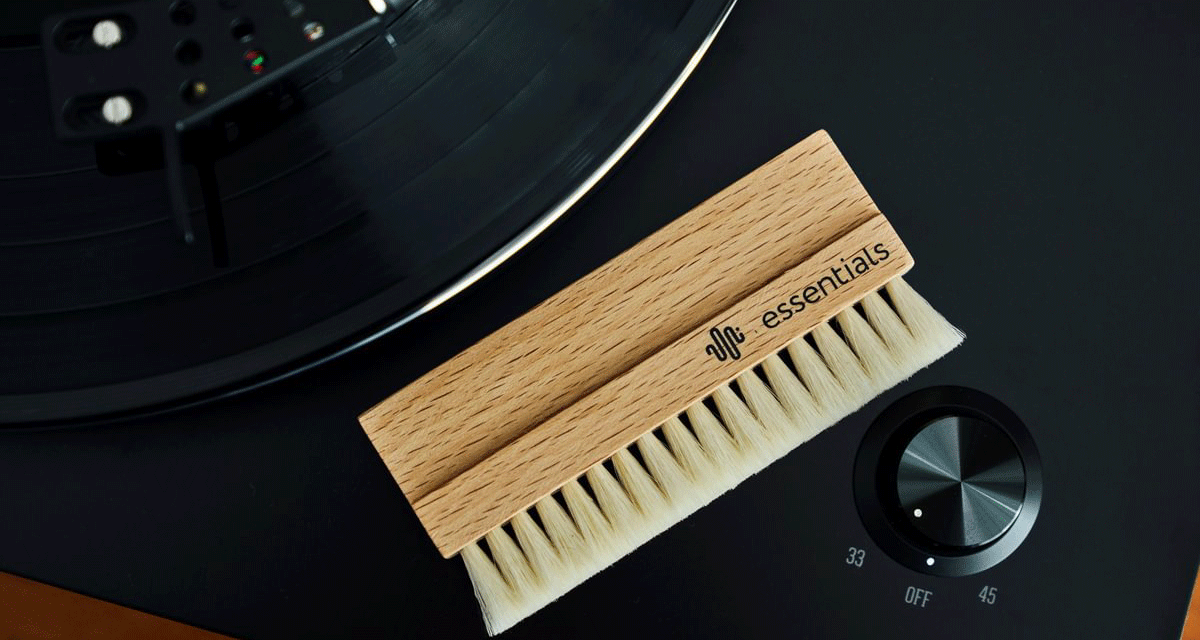Active speakers are a stable of the hi-fi world. Even still, the quality of the speakers varies a lot; why is that? Well, there are a few reasons for that, but one of the main things is that most active speakers, especially cheaper ones, are actually not true active speakers in the purest sense of the word!
What do we mean by that, then? Well, most other active speakers use outdated passive crossovers, like you know from normal speakers. Both our FORTE and FENRIS speakers, on the other hand, use active crossovers. These are built right into our custom amplifiers, with separate channels of amplification for the tweeter and woofer – making them true active speakers. It sounds fancy (and it kinda is) but all in all this means, that with true active speakers, you get the best possible sound quality and ultra-low distortion.

The technical stuff
This part does get technical but let’s start with the basics. When you press play on your speaker, you start a complicated (but very fast) process, that results in the sweet tunes you know and love. There’s a lot of stuff going on in a speaker but in this case, our two main players are the crossover and the amplifier.
During this process, a signal ranging from 20-20.000 Hz (the full range that a human can hear) is sent through the system. The crossover’s job is to sort out the frequencies and send them to the corresponding drivers, while the amplifier has to, well, amplify the signal, so you can actually hear the music.
In an outdated active speaker, with a passive crossover, the crossover is triggered after the amplifier. This means that in the old-school active speakers (the ones with a passive crossover), the amplifier sends out a full signal and spends a lot of energy amplifying the full spectrum of frequencies – this is a massive waste of energy! It is then up to the passive crossover to sort all the frequencies and determine which ones to send out and which ones to cut off. This will ALWAYS result in a loss and an imprecise sound.
Meanwhile in a true active speaker, like the FORTE or FENRIS, the active crossover is triggered before the amp. This gives it the ability to cut away any unwanted frequencies before they even reach the amp – meaning the amplifier gets to focus solely on the frequencies you actually want to hear.
The DSP chip (Digital Signal Processing) is another important part of this puzzle. DSP is used to design the crossover and response of the speaker with a precision only possible in active speakers. Using DSP in combination with active crossover allows the mid/bass woofers and tweeters to have their own dedicated amplifiers. The benefits of using this technology are massive, but how exactly does it work?
Let’s give an example: Typically, the woofers in a passive speaker have a mechanical break to avoid damage at high sound levels. Using DSP supervision, the woofer can be designed with higher linearity since the breaking is handled by the DSP. In addition to this, with DSP we can correct speaker response without deterioration – this is simply not possible in a passive speaker.
The woofers in FORTE A55 are a prime example of the benefits of a transducer design using DSP. We designed a new motor system with a focus on very low distortion. These woofers won’t work in a passive speaker design, but in an active speaker with DSP, they shine with class-leading low distortion and extended frequency response.
Long story short
But what does all this mean for you? True active speakers, like ours, give you a more dynamic and much more powerful sound, even from smaller speakers. Active crossovers are also generally much more precise and allow us to tweak the sound much more precisely.
Quick tip: you can always recognize active speakers with the old passive crossover by the normal screw terminals on the back (known from passive speakers). Always look out for this when picking out your next active speakers!


